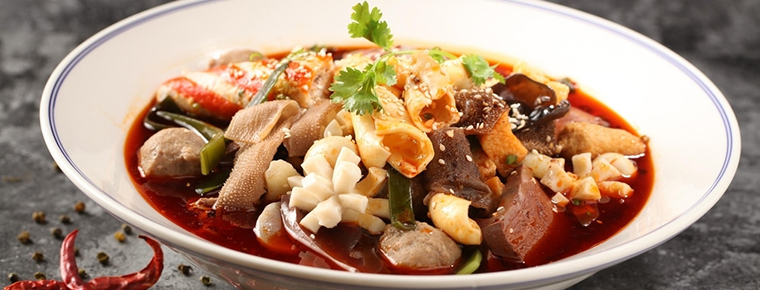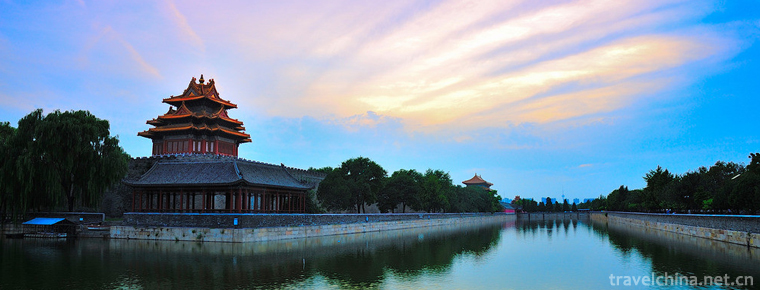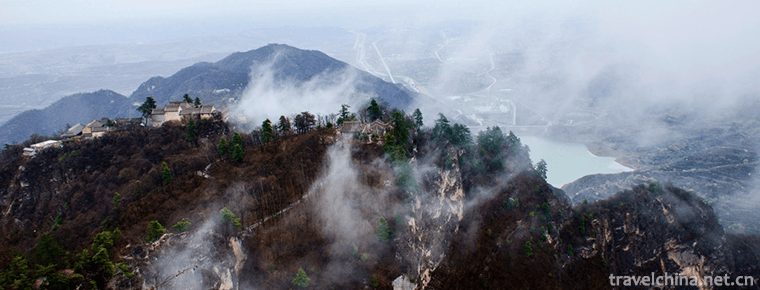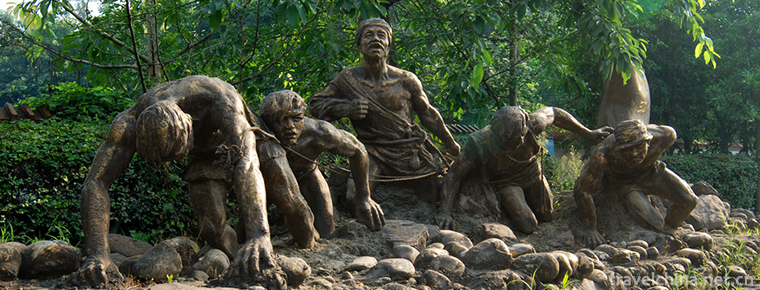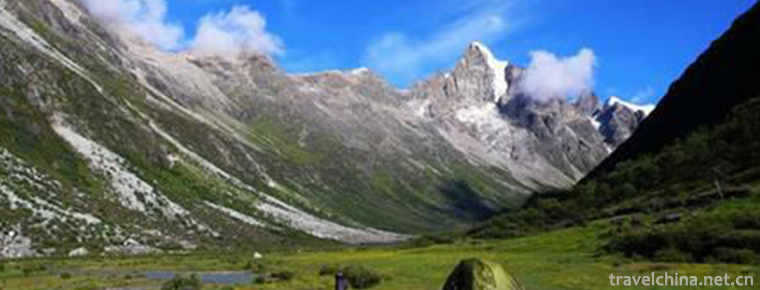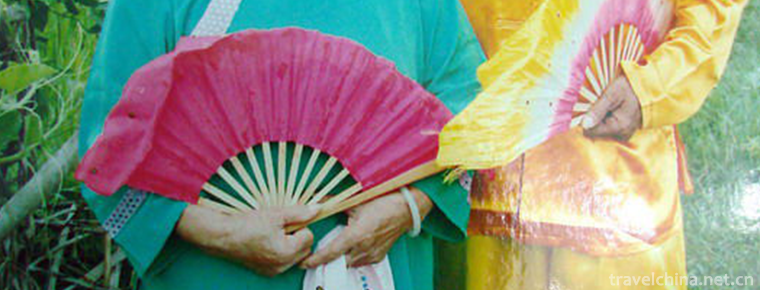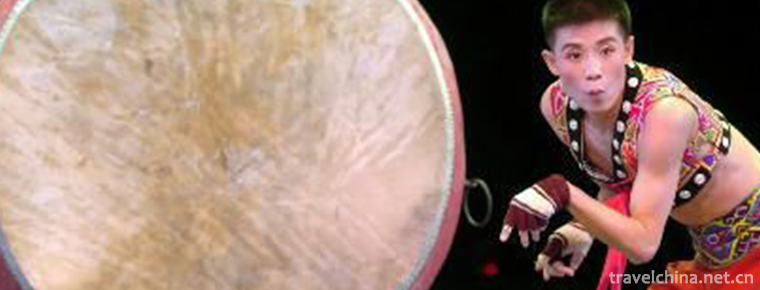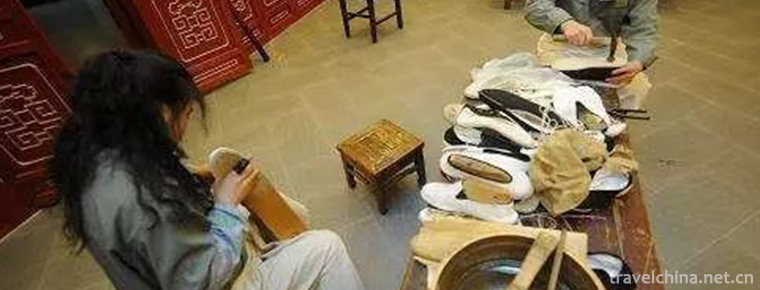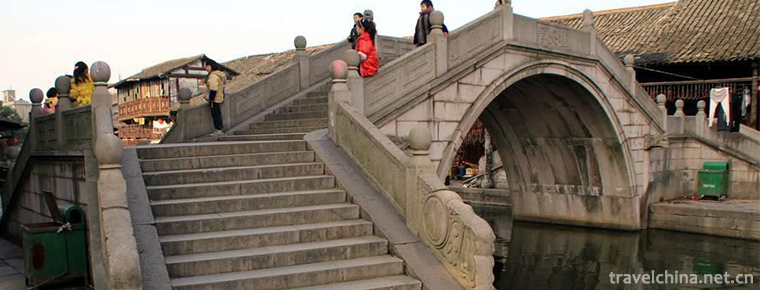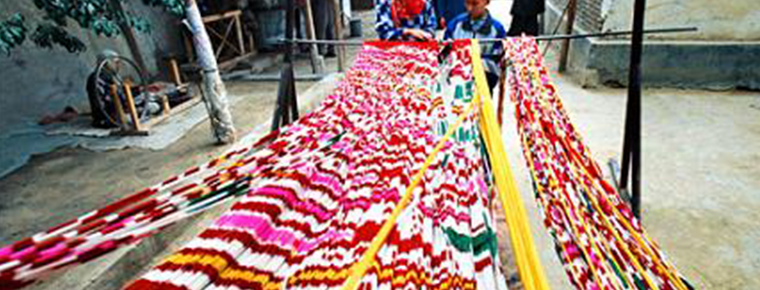temple fair
temple fair
Temple fair, also known as "temple market" or "festival venue". It is a Chinese folk religion and the custom of the age. It is usually held on the Lunar New Year, the Lantern Festival and the February 2nd Dragon Rise Festival. It is also one of the trade forms of China's fairs. Its formation and development are related to the religious activities of the local temples. It is held on the festivals of the temples or on the prescribed dates, mostly in and near the temples. Temple fairs are popular throughout the country.
Temple fairs are ancient traditional folk cultural activities. Apart from the general customs of the New Year, temple fairs were the main customs of the old Beijing New Year. With the development of the times, there will be a series of temple fairs all over the country every Spring Festival. Apart from the familiar "Changdian", the "Five Fairs of Wealth" (Junior 2-16), the "Dongyue Temple" (Junior 1-15), the "Baiyun Guan" (Junior 1-19), and the "Wansuishan Spring Festival Temple Fair" (Lunar New Year 1-16) are all well-known temple fairs in China, and they are the richest. New Year's features.
Temple fairs are also a kind of traditional folk activities widely spread among Chinese people. Folklore is a life culture created, enjoyed and inherited by the broad masses of people in a country or a nation. Temple fairs are an organic part of this life culture. Their emergence, existence and evolution are closely related to the lives of the common people.
On June 7, 2008, Beijing Mentougou District, Chaoyang District, Shanxi Province Taiyuan Jinyuan District, Shanghai Xuhui District, Zhejiang Province Pan'an County, Shandong Province Taian City, Hubei Province Shiyan City, Hunan Province Changsha City, Guangdong Province Foshan City, Shaanxi Province Tongchuan City declared temple fairs (Miaofengshan Temple Fair, Dongyue Temple Fair, Jinci Temple Fair, Shanghai Longhua Temple Fair, Chachang Temple Fair, Taishan Mountain Yue Temple Fair). Wudang Mountain Temple Fair, Fire Palace Temple Fair, Foshan Zumiao Temple Fair and Yaowangshan Temple Fair) have been listed in the second batch of national intangible cultural heritage lists with the approval of the State Council.
historical origin
The 1980 edition of Cihai by Shanghai Dictionary Publishing House explains this: "Temple Fair is also called"Temple Market". One of the market forms in China. Tang Dynasty already existed. Hold at a temple festival or on a specified date. It is generally located in or near a temple, so it is called "temple fair". "Beijing Custom Tradition Market Shop" quotes "Miaoxiang Room Series Talks": "Jingshi Longfu Temple, nine days a month, department stores gather, known as temple fair." This form of market left over from history is still used in some areas after liberation, which has a certain role in exchanging materials between urban and rural areas and meeting the needs of the people. The source of temple fair lies in the system of sacrifice in the suburbs of ancestral temples in ancient times. In ancient times, sacrifice was a frequent and significant thing in people's life. So in Zuozhuan Chenggong's Thirteen Years, it was said that "the great events of the country are sacrifice and military service", which means that sacrifice and war are the top priorities in national life. Early sacrifices were mainly to ancestor gods and natural gods. In the process of offering sacrifices to ancestor gods and natural gods, people gather together to carry out some collective activities, such as offering gifts, playing music, holding ceremonies, etc. This kind of gathering for sacrificing gods can be regarded as the embryonic form of folk temple fairs of later generations. In fact, it can be seen from the two Chinese characters of "Temple Fair", "Temple" originally refers to buildings dedicated to gods, especially ancestor gods.
The temple fair originated around the temple, so it was called "temple"; and because peddlers saw many people burning incense and worshipping Buddha, they set up various stalls outside the temple to make money, and gradually became regular activities, so it was called "meeting". Over time, temple fairs have evolved into recreational activities during festivals, especially during the Spring Festival.
Temple fairs are Chinese folk religions and customs of the age. It is also one of the trade forms of market in China. Its formation and development are related to the religious activities of the local temples. It is held on the festivals or the stipulated dates of the temples, mostly in and around the temples, hence its name. It is prevalent in vast areas of the country. In ancient times, "Japan and China are the cities", carrying out market trade. In the Northern and Southern Dynasties, the rulers believed in Buddhism, built large temples, Bodhisattva birthdays, Buddha statues and other grand events came into being. Traders gathered in department stores to supply visitors and followers. In the Northern Song Dynasty, the Daxiangguo Temple Fair in Kaifeng was very famous. Li Qingzhao, a woman poet known as "the first talented woman of all ages", once joined Zhao Mingcheng, her husband, in the Temple Fair.
Age of Teras
The original temple fair originated from the system of the suburbs of the ancestral temples in ancient times. In order to obtain the protection of ancestors and gods, the ancestors chose to have a dialogue with them in palaces or houses through offering sacrifices and sacrifices. On the day of sacrifice, in order to render the atmosphere, people will also perform some wonderful songs and dances, that is, social drama, also known as temple fair drama, which will form.
Qin and Han Dynasties
Like other folk customs, temple fair is the product of social development, and with the development of society can reflect the color of the times. During the Qin Dynasty, the contents of temple fairs were still single and stable, i.e. offering sacrifices to ancestors and gods. During the Western Han Dynasty, Taoism began to take shape. The temple fair was influenced by religious beliefs, the content began to appear diversified colors, and various customs began to take shape initially. For example, "Miscellaneous Records of Xijing" describes the sacrificial customs of ancestral temples at that time: "Han Zongmiao, drinking in August, using nine gestations, Tailao", "Jingshi Dashui, offering sacrifices to mountains and rivers to stop rain, the prime minister imperial historic two thousand stones, praying ancestral halls such as praying for rain method". The book refers to Chang'an, from which we can get a glimpse of the basic content of temple fair culture in Central Plains.
Buddhism began to be introduced into China in the Eastern Han Dynasty. At the same time, Taoism gradually formed in this period. They have launched fierce competition for survival among themselves, and many religious activities have emerged. Such as Christmas celebrations, altars, waterways, etc. The focus of the competition between Buddhism and Taoism is the construction of temples and Taoism. The second is to win over believers and attract the masses. For this reason, in its religious ceremonies, the entertainment content, such as dancing, drama, touring and so on, has been added. In this way, not only do good men and women flock to it and enjoy it, but also many ordinary people are willing to add interest to it. In order to win over the masses, Buddhism and Taoism often expand their influence by stepping out of temple view.
Northern Wei Dynasty
When Emperor Xiaowen of the Northern Wei Dynasty moved to Luoyang in the ninth year of his reign (485 A.D.), he put the statue of God and Buddha on a float in addition to the "walking images" of Buddhism and Taoism. They also hold monasteries and monasteries in Guanzhong, regularly carry out some activities of Dharma or Buddhism, sit and wait for followers and laymen to go to fasting to listen and worship.
Jin, Southern and Northern Dynasties
During the Jin and Jin Dynasties, social unrest and political darkness led to the decline of Confucianism, which had originally flourished. The war-torn and oppressed people and politically repressed celebrities have converted to Buddhism or Taoism. With the deepening of the theory, both Buddhism and Taoism have made great progress and began to systematize. In the Southern and Northern Dynasties, each had a firm foothold.
After the Six Dynasties, Buddhist temples and Taoist Temple views increased day by day, so temple fairs attached to Buddhist temples and Taoist temples flourished gradually. In the Northern Wei Dynasty, Buddhism prevailed in the activities of "Xingxiang". The so-called "walking image" is a kind of religious ritual, in which the statue of God and Buddha is mounted on a float and travels in urban and rural areas. After Emperor Xiaowen of the Northern Wei Dynasty moved to Luoyang in the ninth year of his reign (AD 485), a Buddha statue travel Congress was held every year on Sakyamuni's birthday. On the eve of Buddha's trip, more than 1,000 Buddha statues were sent to Jingming Temple in the temples of Luoyang City. Along the way, Baogai Bangbu, music drama, all kinds of juggling, very lively .
Tang and Song Dynasties
By the Tang and Song Dynasties, both religions had reached their heyday and had an unprecedented impact on society. A wide range of religious activities have appeared, such as Christmas celebrations, altars, fasting, waterways, etc. Later, entertainment was added to religious ceremonies, such as dancing, drama, tours and so on. In this way, it not only attracts believers, but also makes other non-believers willing to visit .
The unprecedented influence of Buddhist culture has even become the most important part of the ruling class's culture and political life. No matter in the South or in the north, Buddhist temples and temples stand in the forest, Grottoes flourish and Buddhist events prevail. Buddhist worship has become the mainstream of folk beliefs. Buddhist affairs infiltrate into temple fairs, which makes the temple fair culture show greater religious characteristics. During the Tang and Song Dynasties, the economy was highly developed, and the Central Plains region occupied the leading position in the whole country and maintained its central position. Taoist culture flourished more rapidly through the advocacy of emperors. Especially in the Northern Song Dynasty, the Central Plains once witnessed great economic and cultural prosperity. The urban economy centered on Kaifeng, Tokyo, developed rapidly, and temple fairs also flourished as the times require.
Yuan Dynasty
In the Yuan Dynasty, Lamaism was the national religion, and other religions were suppressed. Contradictions between Buddhism and Taoism intensified and triggered debates, and the practice of image began to decline.
Ming Dynasty
During the Ming Dynasty, many temple fairs began to change to the nature of market. Most of them are sightseeing or purchasing goods. Few people actually offer sacrifices or worship. The important feature of temple fairs in Ming Dynasty is that a large number of "guild" or "guild hall" and "public office" rose, which made temples more orderly. There are many "Shan-Shan Guild Halls" in Central Plains. They worship Guan Yu, erect temples and temples, especially theatre buildings, which further expand the influence and role of temple fairs.
Qing Dynasty
By the Qing Dynasty, temple fairs had been divided into so-called "multi-connotation temple fairs" and "Yingshen competitions". The former has recreational activities at the same time as religion and entertainment of gods, while the latter is to carry the gods out of the temple for a tour. It is a temple fair without fairs but with performances, such as Miaofeng Mountain Temple Fair in Beijing. At the same time, some places have no temples in the city and are also called temple fairs, such as the famous Changdian temple fairs in Beijing, which are also collectively called temple fairs.
Inheritance and innovation
Guangfu Temple Fair has both inheritance and innovation. On the 9th, the non-heritage exhibition area was exhibited on Beijing Road. 46 exhibition items gathered together. Modern elements were integrated into traditional culture, which greatly promoted the integration of non-heritage protection and commodity circulation. On the same day, the Youth Temple Fair held in Wuxianguan Square was inherited in innovation. Young people displayed animation graffiti on the spot and deduced traditional culture by modern cartoon graffiti.
Temple fairs such as Ditan, Longtan and Changdian have launched 100 non-heritage exhibitions, while non-hereditary inheritors such as sugar blowers, pull-out films, paper-cuts, monkeys and other non-hereditary inheritors have shown their unique live performances.
In addition to seven traditional folk Flower Fairs and hundreds of non-heritage performances such as face-changing in Sichuan, crossbows in overpasses, wrestling and so on, the Temple Fair also specializes in the park core area north of Fangzetan, setting up a folk culture square with more than 20 stalls inviting non-hereditary inheritors from the whole country to sit in the town. Among them, Beijing Wooden Carving Gateway, Hebei Paper-cut, Tianjin Clay Man, Shandong Wooden New Year Paintings, Qingyang Xiangbao, wheat straw painting and Anyang auspicious drum, folk artists from all over the world show their ancestral life here.
The focus of this Longtan Temple Fair is to highlight cultural themes. In addition to traditional folk flower fairs, non-material cultural heritage exhibition booths have also been set up in the park. More than 20 intangible cultural heritage items, such as paper-cut, monkeys, lacquer carvings, sugar paintings and facial makeup, have been selected for exhibition, and the representative inheritors of exquisite skills have made their own works while communicating with tourists.
In addition to the non-legacy stage performances such as the 13-stage banner and drums and the old Beijing shouting, the Changdian Temple Fair has also added a list of non-material cultural heritage exhibitions at various levels such as Beijing Maomao, sugar blowers and carving lacquers this year.
"The important thing is to tell them about culture and the origin of products, so that people will remember, and there will be returnees, so as to facilitate the dissemination of non-heritage culture." Wang Zhongqiang is a non-hereditary broadcaster.
The 3rd Hong Kong City Folk Culture Temple Fair opened in People's Square. Among the many wonderful activities of the temple fair, non-relics exhibition and folk exhibition have become one of the highlights of the current temple fair.
On January 28, 2015, many intangible cultural heritages appeared at Shengjing Temple Fair in Shenyang. Tiger shoes, clay kneaders, sugar people, paper-cut and other folk experts gathered here, attracting the eyes of many citizens, to add a good place for shopping before the Spring Festival.
Cultural and Historical Value
Cultural Value of Temple Fair
The temple fair culture is a part of our national popular culture. It is an extremely complex, old and fresh social and cultural phenomenon. It is both religious and secular. It fully reflects the ideology, values, behavior and psychological situation formed by the peasant masses over a long period of time. It continues, inherits and develops from generation to generation, and it has a long history and can not be stopped. With the reform and opening up and the implementation of national and religious policies, temple fairs in urban and rural areas have sprung up on a considerable scale, which is worth studying.
There are many kinds of temple fairs offering sacrifices to immortals. According to the data already investigated, it can be seen that:
One is the object of ancestor worship. Such as Sanhuang, Fuxi, Nuwa and so on.
Second, Taoist God worship. Jade Emperor, Queen Mother, Lao Jun, Zhenwu Emperor, Wang Lingguan, Tiandi Shui Sanguan, Fire God, Wenchang, Kuixing, etc.
Third, the worship of Buddhist gods. Tathagata (Sakyamuni), Big Belly Maitreya Buddha, Guanyin, Manjusri, Puxian, Eighteen Arhats, etc.
Fourth, heroism. Sun Wukong (Qitian Dasheng), Guan Yunchang, etc.
Fifth, the Temple Fair of Qizi. Send-off Niang, Lishan Mother, Notre-Dame of Yaoshan, Shima and so on.
Sixth, pray for peace and wealth. Chenghuang, Mazu, Sun Simiao, God of Wealth, etc.
The cultural connotation of temple fairs embodies primitive beliefs, folk beliefs and religious beliefs. The essence of temple fairs is to pray for life and health. The most fundamental value orientation is "advocating filial piety and promoting good, dispelling disaster and avoiding evil". Agricultural culture is fundamentally a culture of small producers and a backward and disadvantaged economic culture. In the face of powerful natural forces, ordinary people place their hopes on the worship of natural gods, totems and ancestors. Under the domination of the ideas of "harmony of heaven and man" and "animism of all things", the worship and rituals of gods have formed primitive beliefs, folk beliefs and religious beliefs. The ancestors, under the control of the concepts of "life and health", "advocating filial piety and promoting goodness, dispelling disasters and avoiding evil", treated everything kindly and cared for everything. For example, "Zhongyuan Festival" is a good day of Taoism and a filial piety day of Buddhism; Laba Festival people use Laba porridge not only to honor ancestors, gods, animals and plants, but also a stone in front of their own door. The Chinese nation is one of the most generous and affectionate people, which can be fully reflected in the cultural activities of temple fair festivals.
Development and Evolution of Temple Fairs
Temple fairs are held on or near temple festivals and fixed dates. Later, the gods were also carried out of the temple for a tour, called the Welcoming God Competition. It is the product of people's worship of gods and pleasure of body and mind. With the development of economy and the need of people's communication, temple fairs gradually merged into market trading activities while keeping sacrificial activities. At that time, temple fairs were also named "temple fair", which became an important form of Chinese market. Temple fairs and fair trade are integrated into a comprehensive social activity of worshiping gods, exchanging feelings and trading. With people's needs, entertainment activities were added to temple fairs.
In the Han Dynasty, Buddhism was introduced into China, and Taoism was gradually formed. The activities of rewarding gods in folk beliefs have been combined with Buddhist, Taoist and spiritual activities, and their activities have gradually shifted from rural communities to Buddhist temples and Taoist concepts. When Buddhism and Taoism hold various festivals and celebrations, various non-governmental organizations also take the initiative to gather and invigorate. As a result, temples and Taoist places have gradually become places for mass gatherings based on religious activities. In the activities of temple fairs, Buddha opposes Taoism or divisions, or penetrates into each other, which enriches the culture of temple fairs.
During the Northern and Southern Dynasties, temples and markets had already been linked, but the relationship between temples and markets was not close at that time.
After all, the Tang and Song Dynasties were the most open period in China's history. Especially Hu people's cultural involvement, Confucianism, Buddhism and Taoism coexisted and entered the heyday. The temple fair activities gradually developed from worshipping gods and entertaining gods to entertaining people, adding entertainment content, such as dance, drama and so on. Buddhism and Taoism built a large number of temples and Taoist concepts to win over believers and attract the masses, thus promoting the prosperity of temple fair activities. At this time, religious buildings such as temples, temples, shrines, temples, views and nuns are very dense. Dragon King Temple, heavenly temple, ancestral temple, goddess temple, fire god temple, earth temple, Town God's Temple, Guan Ye temple, mountain god temple, river god temple, Yu king temple, Temple of Notre Dame and Erlang temple are numerous. These laid the foundation for the development of temple fairs in the future, and temple fairs also thrived at the historic moment. Although temple fairs in this period had formed a spectacular situation in the whole country in terms of both quantity and scale, the activities of temple fairs still focused on the sacrificial festivals, while the folk commercial trade was relatively weak.
The Ming and Qing Dynasties and even modern times were the period when temple fairs were really finalized and perfected. An important feature of temple fairs in the Ming Dynasty was the large rise of "guilds" ("guildhalls", "public offices"), which made temples more orderly, such as the "Shanxi and Shaanxi guildhalls" built by Shanxi and Shaanxi provincial businessmen throughout the country.
Nowadays, temple fairs have become an indispensable folk activities for the people. In addition to being held in temples, they are also held in open places such as parks and squares, mainly for cultural, trade and entertainment activities. Religious activities are very few. Temple fairs throughout the country can be seen everywhere. Typical examples are: Beijing temple fair, Shanghai Town God's Temple temple fair, Nanjing Chiang Kai Shek temple fair, Shandong Taishan Dongyue Temple Fair, Tianjin imperial assembly, Fujian Matsu Temple Fair and so on. The rich and colorful activities of local temple fairs have formed a unique Chinese temple fair culture.

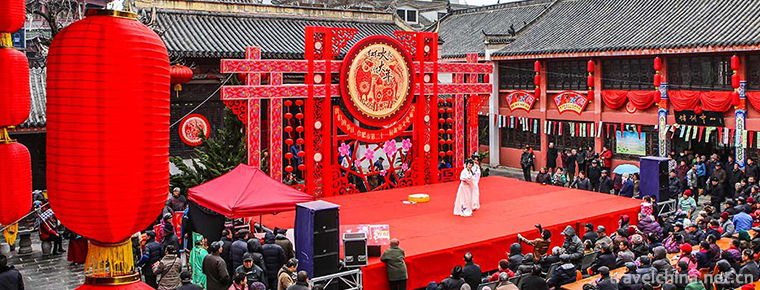
-
Kongtong Mountain Scenic Spot
Kongtongshan Scenic Area is located 12 kilometers west of Pingliang City, Gansu Province. It overlooks Xi'an in the east, Lanzhou in the west, Baoji in the South and Yinchuan in the north.
Views: 209 Time 2018-12-12 -
Shennong Creek Scenic Area
Shennongxi, originating from the main peak of Shennongjia, flows through Badong County, Hubei Province. It travels from north to south through deep mountain canyons, and converges into the Yangtze Riv.
Views: 147 Time 2018-12-12 -
dalian forest zoo
Dalian Forest Zoo is located in Baiyun Mountain Scenic Area, Dalian, covering an area of 7.2 square kilometers. The zoo is divided into two parts: the first phase of captivity and the second phase of .
Views: 158 Time 2019-01-06 -
Jiali Folk Stories
On May 23, 2011, Jiali Folk Stories were approved by the State Council to be included in the third batch of national intangible cultural heritage list..
Views: 380 Time 2019-05-05 -
Leizhou song
According to the records in historical books, Leizhou songs were prevalent as early as the Song Dynasty. After the 1990s, people divided Leizhou dialect into different rhymes to express different cont.
Views: 84 Time 2019-05-11 -
Folk dance
Generally speaking, it refers to the form of dance which is produced and spread among the people, restricted by folk culture, improvised performance but relatively stable in style, and with self-enter.
Views: 231 Time 2019-06-05 -
Manufacturing Skills of Inside Lined 1000 Layer Cloth Shoes
Inline Shoe Shoe Shoe Shoe Shoe Shoe Shop was founded in 1853 in Xianfeng, Qing Dynasty. At first, it was specially designed for the royal family and officials at all levels t.
Views: 302 Time 2019-06-07 -
Construction Techniques of Stone Bridge
Shaoxing's ancient bridge construction techniques can be traced back to the Spring and Autumn Period and the Warring States Period. To the Han Dynasty, the stone arch bridge construction techniques be.
Views: 216 Time 2019-06-15 -
Weaving and Dyeing Techniques of Adlais Silk
Adlais silk is produced in Jiya Township, Luopu County, located in the northwest of Luopu County, on the East Bank of the middle and lower reaches of the Yulong Kashi River. Ancient Hetian was the tra.
Views: 425 Time 2019-07-06 -
Neijiang Sports
In 2019, Neijiang City will host 8 provincial and above sports competitions, 50 municipal sports meetings and 759 "happy weekend" activities; Neijiang sports athletes will win 3 gold medals, 4 silver medals and 6 bronze medals in international and domestic .
Views: 334 Time 2020-12-16
